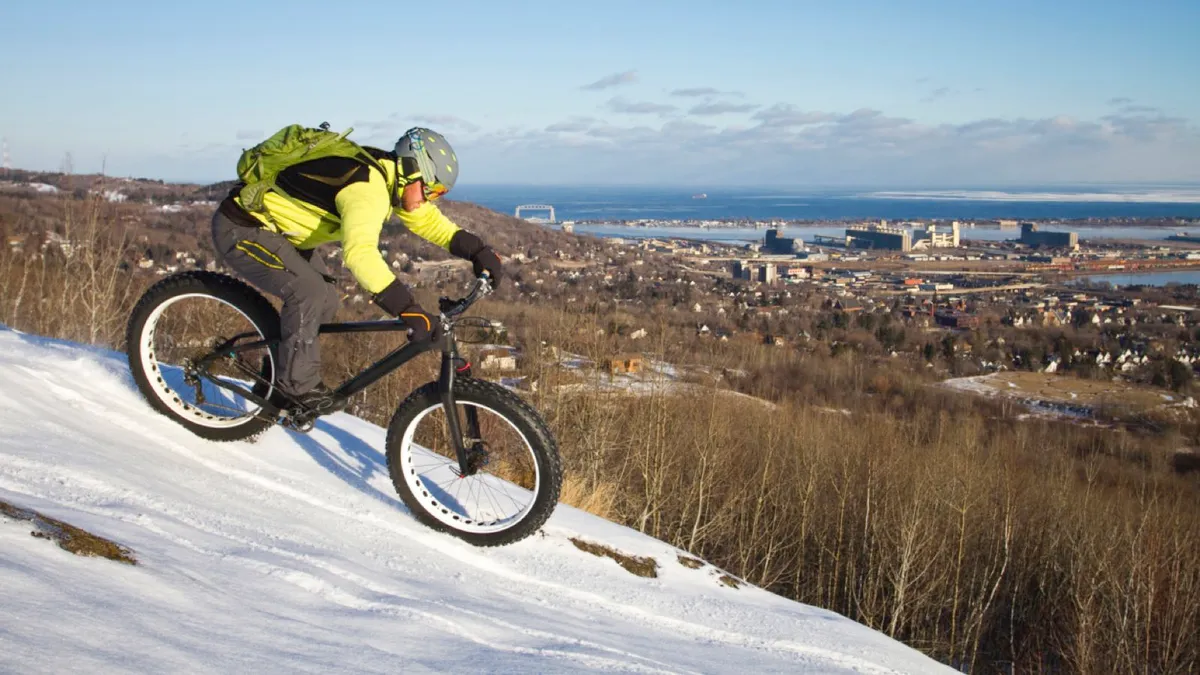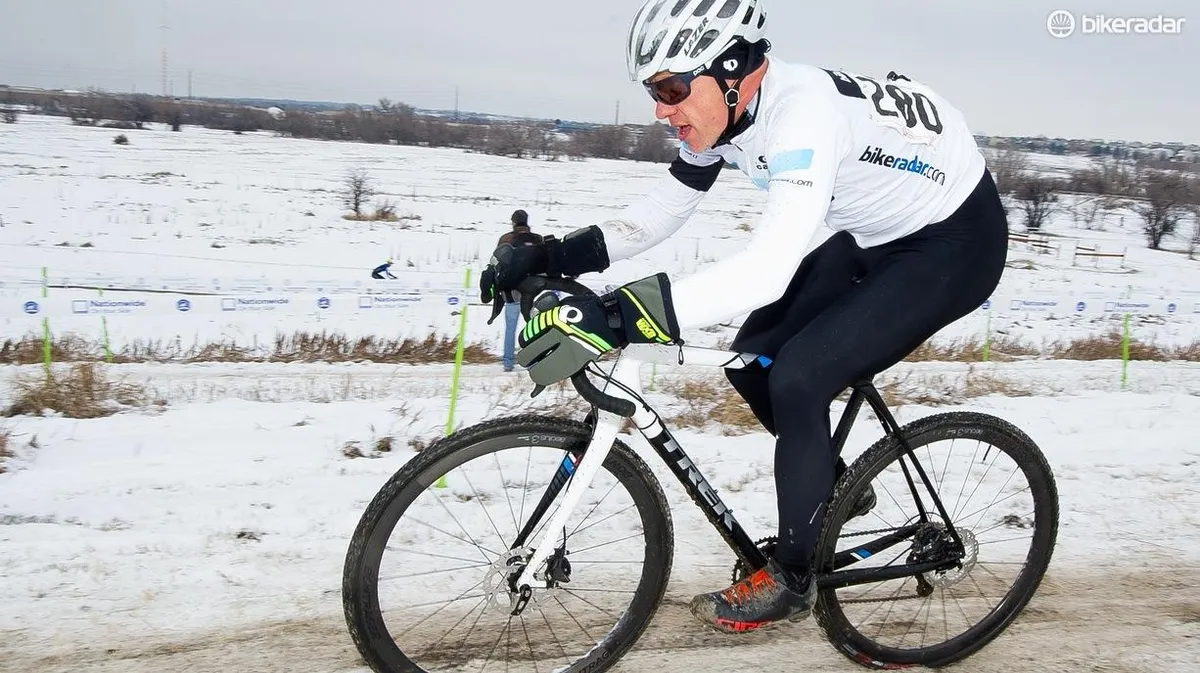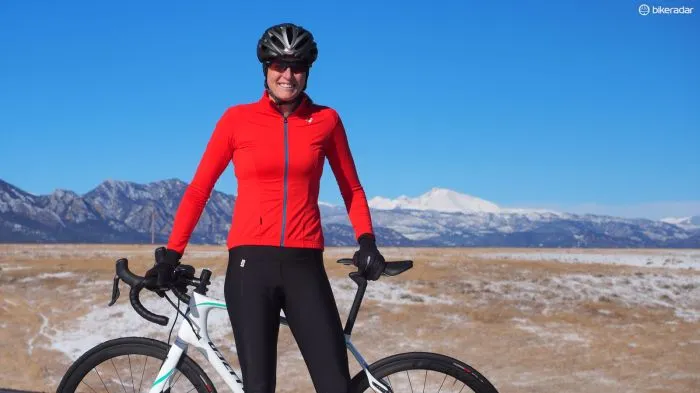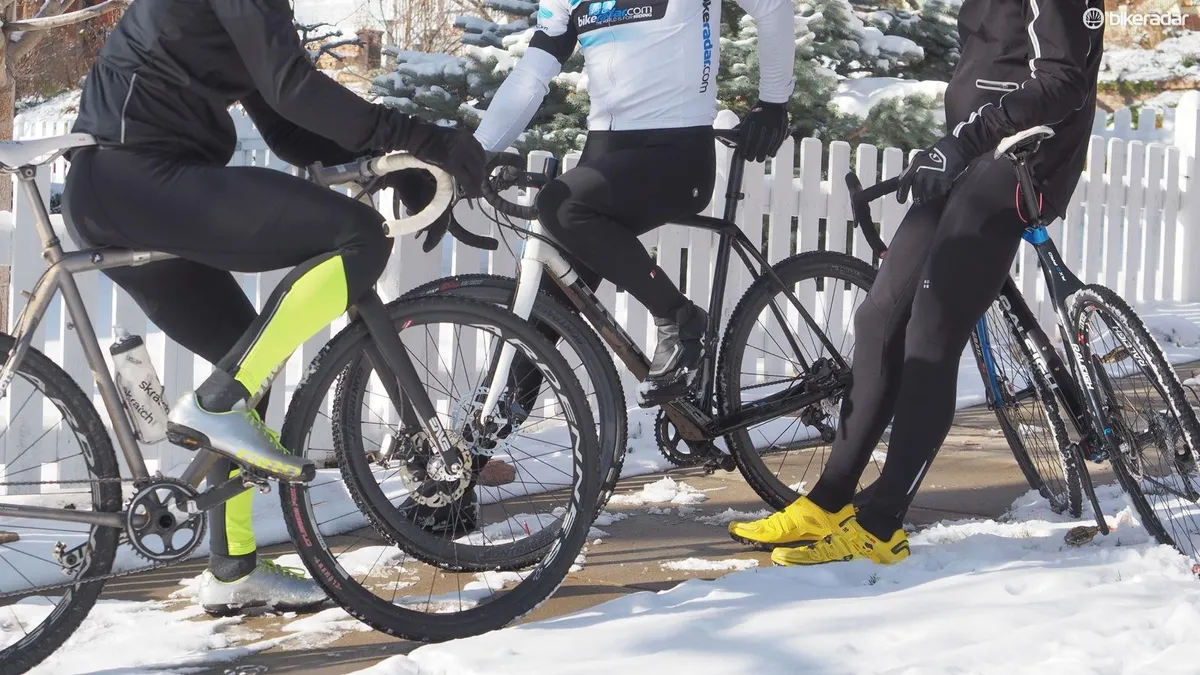If the nights are drawing in it means it’s time to dig out your trusty jacket, hat and extra-warm gloves, because you’re going to need extra protection to keep riding. Let us help you find the best winter cycling clothing, from your head to your toes.
- Best bike clothing: all our guides in one place
- Buyer’s guide to layering up for winter cycling
- Best bike lights for road cycling
We don’t want to scare you off: winter cycling can be brilliant. The roads and trails are quieter, it’s every bit as beautiful as riding at other times of the year, and you’ll be maintaining that hard-earned fitness you built up over the summer months. The old saying is true — there’s no such thing as bad weather, just bad clothing.
For this winter clothing buyer’s guide, we’ll assume that you already have summer riding kit like a short-sleeved jersey, bib shorts, baselayer, bike shoes and helmet.
Layer up, layer up

Always think about wearing multiple layers, so you can fine-tune your clothing microclimate. If you step out of the door in low temperatures on a wet and windy day, you’ll be tempted to put on your thickest, warmest kit — but if the weather improves, you'll be boiling.
So if you set off instead with a baselayer, a short-sleeved jersey as a mid-layer plus arm-warmers, gloves, and a skullcap under your helmet, with a waterproof jacket or gilet packed into your jersey pocket, you can easily shed or add layers as needed.
A baselayer is important because it moves sweat away from the skin. They can be bought in a range of materials, including natural fabrics like Merino and synthetics too.
Your body will warm up as you ride, so allow for that when choosing your outfit. If you’re nice and cosy when you set off, you'll be shedding layers in no time.
Choosing a winter jacket for cycling

You’ve basically got two options here, depending on whether conditions are cold and/or wet. You can go for a waterproof shell, which will protect you from the worst rain, or a soft-shell jacket, which isn’t completely waterproof, but can be warm and very breathable.
There’s a certain trade-off to be made between water resistance and breathability, with price being the key factor that affects how much of a compromise you must make. The very best fabrics manage to be highly waterproof and breathable at the same time. Features like taped seams, pockets and zipped vents might seem attractive, but they’ll increase the price and make it harder to stuff into a jersey pocket.
It’s also worth considering what you’ll be doing: if you like riding fast and light on a road bike or a cross-country MTB, opt for breathability, a slimmer cut and packable weight. If you need something more heavy duty – for commuting or hanging around by the bike park, for example – seek a looser cut and possibly a hood. Consider off-the-bike practicality and style too.
There is, however, a third option which we haven’t addressed and that is the Jerket. These are an emerging trend in foul weather clothing that offers wind or water protection but still retain the breathability of a jersey. Disguised a long and even short sleeve jerseys these technical garments blur the line between a jersey and jacked (hence the name), and utilize laminated fabrics or DWR treatments to keep the elements out.
Finally, don’t forget safety. While the research is still inconclusive on whether high-vis clothing actually makes much of a difference outside dusk and dawn, it certainly can’t hurt during the day. And reflective detailing definitely does help to keep you safe when illuminated by car headlights – though bear in mind it's retroreflective, so it bounces light back to the source. See this explainer from 3M on how their reflective materials work.
Check out our guide to the best waterproof jackets for cycling to find our current recommendations.
Choosing a winter hat for cycling

Keeping your head warm and dry is a wise thing to do. Whether you go for a full-on Belgian-style winter hat — complete with earflaps — that can be fitted under your helmet, or a skull cap that adds a thin layer of protection, is up to you.
A regular cycling cap is better than nothing at keeping the chill off your scalp, and slips neatly under your helmet. A headband like the staple from Pearl Izumi scores high on the warmth-to-weight ratio, and is easy to tuck into a pocket mid-ride.

We like some of the helmet-specific caps, like the one above from Italian brand Kask. Pair it with an aero shell, a helmet cover like the one from Velotoze or their Infinity pop-top helmet, and you can laugh right in the face of Mr Jack Frost. Then, come spring, whip them off and bung them in the box marked ‘winter gear’.
Neck gaiters — made by Buff, Pandana and others — are another lightweight but effective piece of winter armour. You can pull them up over your chin, or even use them as a hat if you forgot your cap. As with a headband, they are also easy to tuck into a jersey pocket.
Choosing winter gloves for cycling

Freeze your fingers on a long ride once and you’ll never forget just how miserable it can make you. It’s dangerous, too, particularly on busy roads: you need your digits for braking, changing gear, ringing that bell and clinging on tight to the handlebars. Y’know, the important stuff.
So choosing some good winter gloves for cycling is an absolute must. The good news is that things have never been better — there are so many good mitts on the market, that’ll keep your fingers warm, dry and happy.
Some can even work with your smartphone, should you wish. Other designs don’t have individual fingers, but adopt a 'lobster claw' approach, grouping fingers together for extra toastiness.
As with the layering advice given above, remember that riding your bike raises your heart rate, so don’t leave the house with excessively toasty gloves for the conditions. A pair of glove liners made from Merino or silk will let you shed warmth as needed, though you may need to size up on your outer gloves.
Some clothing brands, like Rapha, offer a layering system, comprising dedicated liners, winter gloves and overmitts, but you probably only need all three if you’re riding the Iron Curtain trail.
Remember that if your gloves are really thick then it’ll be harder to operate the brakes and gear levers, operate your jacket’s zipper and any of the other little jobs your fingers do on a bike. It’s also worth looking for longer cuffs, so that they can be tucked inside the arms of your jacket and retain precious body heat.
You’ll also want some padding on the palms and possibly the thumb, to cushion yourself from jolts and improve comfort. It can be made from foam or gel inserts, and will make a big difference. Finally, look for some grip on the palms, index finger and thumb, particularly if you’re riding off-road.
One final tip — a fleece or cloth patch on the thumb can be massively useful for wiping sweat and snot away. It sounds gross, but you’ll appreciate it!
Choosing winter tights and trousers for cycling

Once your top is covered, it’s time to think about your lower half.
If you’re a roadie then that means bib tights, leg/knee warmers or tights over your regular bib shorts.
If you’re a commuter then you might be thinking about waterproof trousers.
And if you’re a mountain biker then you’ll have the choice between shorts or tights. Possibly baggy shorts on top of tights.
Roadies: the trend of thermal bib shorts makes the bib-shorts-plus-leg-warmers combination more appealing in cold weather, and many companies offer water-deflecting options in both.
If it’s truly cold, a thermal pair of bib tights is usually best. For cold and rainy days, some of us at BikeRadar like waterproof tights, and others prefer to pull waterproof shell pants over tights, as waterproof tights can feel a bit clammy. As always, look for decent fit and padding: you tend to get what you pay for.
Commuters: if your commute is a short one then you can either wear your work trousers (get trouser clips or tuck ’em into your socks to stop them getting caught in your chain), or buy some overtrousers.
Some models, like Gore’s Windstopper Shell Pants, include a handy Velcro panel at the rear of each leg so they can be tightened as needed, instead of using a trouser clip.

Mountain bikers: are you willing to ride without wearing shorts? The answer may well be “no”. In which case, you can simply fit some tights underneath, again made ideally from a windproof, waterproof, breathable fabric with some reflective detailing, or just go without. The choice is yours.
Read our guide to the best winter bib tights for cycling
Choosing winter overshoes for cycling
Despite advances in materials and design, road riders have to accept that their feet will, eventually, get wet. Overshoes may be made from waterproof materials like neoprene, but they still have holes underneath for cleats. Even waterproof socks don’t provide total protection: the rain can run down your legs and, once in your socks, it can’t get out.
You can improve your chances, though, by wearing your tights or leg warmers over the tops of the overshoes. Think roof shingles — you want the water to run over, not under.
But both these things will definitely keep your feet much warmer and dryer than they otherwise would be. For the ultimate in protection, you could get a pair of dedicated winter shoes like the Northwave Extreme GTX, with Gore-Tex liners and ankle padding that includes a neoprene liner to keep water out.
Finally, it’s always good to take a cue from sheep and wear wool socks, which retain heat better when wet than synthetics do.
Look after your kit

Modern, quick-drying, breathable clothing is excellent — anyone who remembers the days before Lycra can vouch for how far things have come — but you’ll still need to look after it carefully. That means keeping it clean, washing it regularly (follow the instructions), and reproofing it as needed. Don’t use fabric softener, because it clogs the pores of your clothing.
High-tech, breathable clothing made from fabrics like Gore-Tex and eVent usually needs to be regularly washed and recoated with Nikwax or similar products. That’s because these fabrics often have a durable outer shell that protects the waterproof, breathable membrane beneath them, and this needs to be reproofed regularly. The new Gore One is an exception to this rule; this material — used in Gore, Castelli and 7Mesh jackets — actually improves with washing.
If your jacket is made from something like Epic Cotton, it needs to be tumble dried regularly to remain water-resistant. If you do damage your clothing, patches can be bought for Gore-Tex kit, and many manufacturers will repair damage. Some even do it for free.
